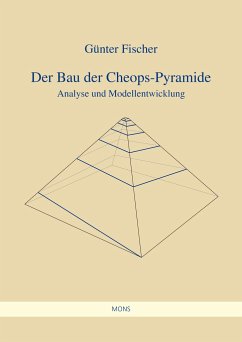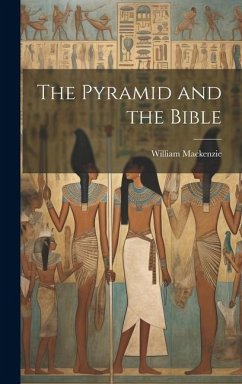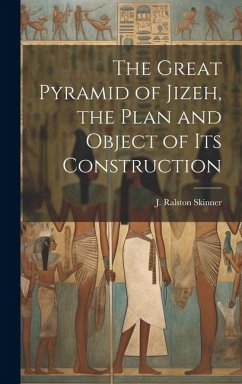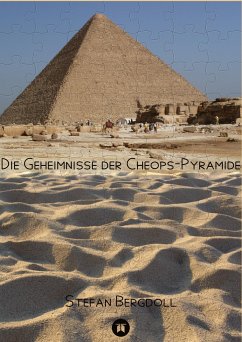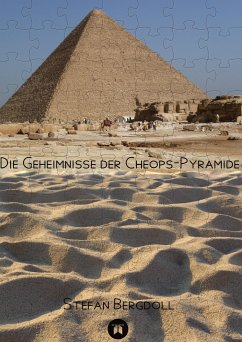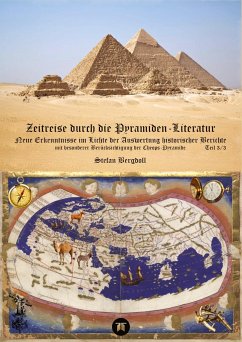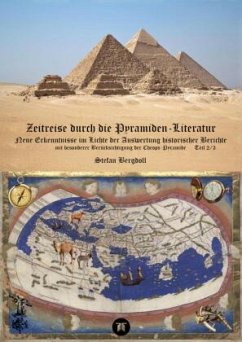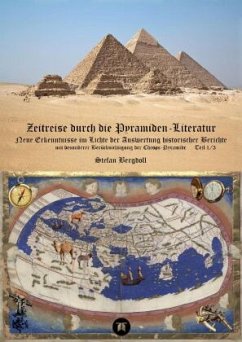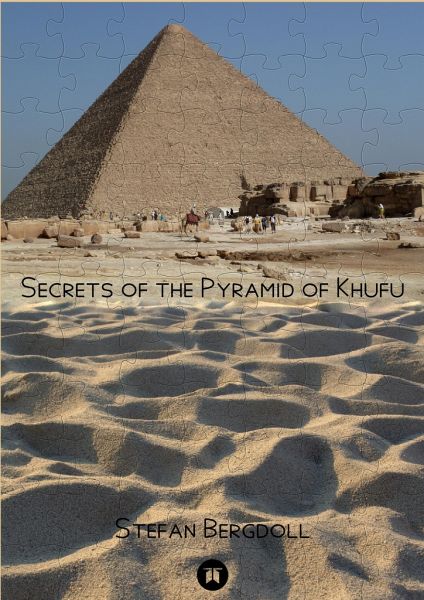
Secrets of the Pyramid of Khufu

PAYBACK Punkte
0 °P sammeln!
In the first part, the book provides all publicly available important facts about the Dixon relics (findings by Waynman Dixon in 1872 in the two previously closed small shafts of the Queen's Chamber of the Pyramid of Khufu), as well as about the small shafts and their previous explorations and essential theories about their significance.Then the author's analytical results on the Giza Plateau are presented. New and exciting connections were found in the construction of the entire ensemble of the pyramid complex, whereby above all the dimensional signature of 1000 royal cubits by Hemiunu, the s...
In the first part, the book provides all publicly available important facts about the Dixon relics (findings by Waynman Dixon in 1872 in the two previously closed small shafts of the Queen's Chamber of the Pyramid of Khufu), as well as about the small shafts and their previous explorations and essential theories about their significance.Then the author's analytical results on the Giza Plateau are presented. New and exciting connections were found in the construction of the entire ensemble of the pyramid complex, whereby above all the dimensional signature of 1000 royal cubits by Hemiunu, the supposed master builder of the Pyramid of Khufu, clearly emerges, which can be explicitly proven at five relevant routes, among others to the Sphinx and the Tomb of Hemiunu. Equally exciting was the finding of mathematical connections of the main elements on the Giza Plateau. If you construct a circle through the three centres of the Great Pyramids, you get a diameter of 9 × 1000 = 9000 royalcubits. If you construct a circle at the intersection of the north-south axis of the Khufu pyramid with the east-west axis of the Khafre pyramid, which intersects the two southern corners of the Khafre pyramid, and draw a square around this intersection with the same area as the circle, the outer sides of this square touch both the west side of the Khafre pyramid and the south side of the Khafre pyramid. Further exciting connections concerning the Giza Plateau can be found in the book, together with a detailed site plan true to scale, in which all conspicuous features are marked.Statements based on the evaluation of historical travel reports are presented. A factual classification is made for statements concerning the three Great Pyramids on the Giza Plateau, as well as the two Great Pyramids of Dahshur, the Step Pyramid of Sakkara and the Great Sphinx of Giza. For the Pyramid of Khufu there is a further subdivision into: Well Shaft, Tomb Robber Tunnel, Northeast Edge Chamber, Small Chamber directly below the King's Chamber, Unknown Passage from the King's Chamber, Queen's Chamber and Subterranean Chamber. Statements on the Pyramid of Khafre are divided into the entrance area and the outer casing.Another chapter is devoted to the secrets of the inner chambers of the Pyramid of Khufu. Particularly worth mentioning in this context is the existence of a second sarcophagus in the Pyramid of Khufu, namely in the Queen's Chamber.In a further chapter, there is a systematic and chronological listing of the research on the Pyramid of Khufu from the 1950s to the 2010s. Each decade is dealt with in a subchapter. This chapter provides an almost complete overview of all exploration attempts from the second half of the 20th century onwards concerning the Giza Plateau. Connections between the people involved are also shown in order to better understand the overall context of the exploration.One chapter is dedicated to the chamber (secret chamber) I postulated above the King's Chamber, for which an analysis of the stone layer heights provides clear evidence.In an extensive chapter, the construction of the Pyramid of Khufu is analysed with the help of the most modern research results. I was able to determine 13 ½ to 14 years as the minimum construction time, in fact it was probably 18-20 years.Finally, another comprehensive chapter is devoted to the reconstruction of the Pyramid of Khufu. Here, a graphical reconstruction is also presented, which impresses with its simplicity, which also makes it seem plausible. It is based exclusively on simple mathematical rules, geometric elements (circles and lines), and primitive aids. All relevant internal points of the Cheops pyramid can be explained with it.The appendix offers some useful additional chapters, such as on number mysticism.




